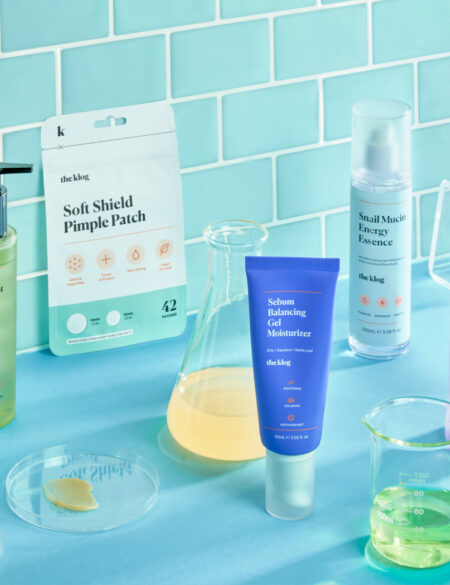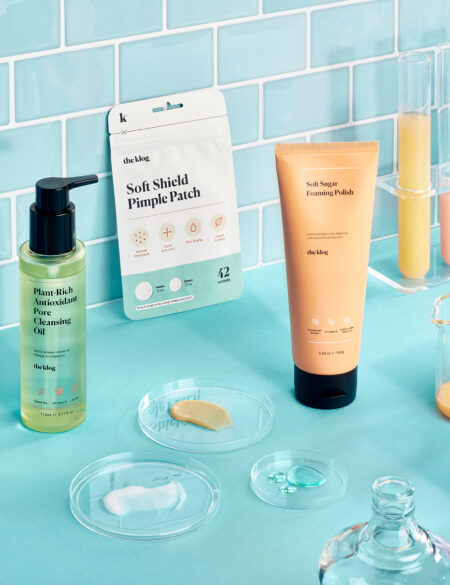Raise your hand if you’re feeling overwhelmed, confused, and frustrated by all the information out there about stretch marks. I see you all out there, and let me tell you: you are not alone. I repeat: you are not alone! In fact, more than 90% of women have, or will get, stretch marks somewhere on their body.
Many creams and oils and treatments out there promise to prevent stretch marks, minimize them, or make them disappear completely. And it’s easy to sink a lot of money into these products hoping that one of them actually works.
Charlotte and I had quite a few questions about treating and preventing stretch marks, too, so we went straight to the best source of information: dermatologists. We wanted to know what kind of a role genes played in stretch mark development, whether you could truly prevent them, and if it was possible to treat faded, silvery marks, as well as the fresh, bright red stretch marks. So let’s get to it.
Why Do Stretch Marks Form?
Stretch marks form when the skin is forced to grow at a rapid pace. This often happens during adolescence and pregnancy – especially on the breasts, abdomen, back, upper arms, bottom and thighs. They can also form due to weight gain, often in the same areas just listed. While anyone can develop stretch marks, they’re more prevalent in women than men. Men typically get them during growth spurts, weight gain or muscle development.
Does Moisturizing Prevent Stretch Marks?
Moisturizing is one of the most common suggestions for preventing stretch marks, but how effective is it?
“Stretch marks have been show to be a defect in the elastin fibers in the dermis, the second layer of skin,” notes Dr. Fayne L. Frey, who practices dermatology and dermatological surgery. “Exactly how a moisturizer would be of benefit is unknown. With all that being said, there are studies that show application of emollient moisturizers minimize and prevent progression of stretch marks, and others that show it makes no difference. I do advise my pregnant patients to moisturize twice daily.”
So the answer is that the verdict is still out, but that moisturizing, in general, can only bring positive effects to your skin. The more emollient the moisturizers are, and the more consistent you are with application, the better.
What Role Does Genetics Play?
Genetics definitely plays a significant role in the development of stretch marks.
“New research is shedding light on the exact cause and genetic association with stretch marks,” says Dr. Frey, who emphasizes that research is still underway. While we may not have the exact answers right now, you can look to your parents’ development of stretch marks to see if you may be predisposed to get them, as well. If your mother had them during pregnancy or adolescent growth spurts, for example, you are likely to develop them, as well.
As research continues, we should have a better idea of how genetics play a role. All we know for sure, at this point, is that they do.
How Can You Eliminate Stretch Marks?
Note that no matter what you do, stretch marks are extremely unlikely to disappear. You can apply as many creams and ointments as you want, but these will, at best, fade your marks. The good news is that your stretch marks will do you no physical harm. They’re just kind of annoying to deal with.
With that said, faded marks are much less noticeable than bright red marks, and time is your best friend where that is concerned. You can also use retinoid, alpha hydroxy acids, vitamin A, cocoa butter, and vitamin E to the affected skin, as well as lasers, to help reduce their appearance at a more rapid pace.
“It is best to treat stretch marks when they are red, but even after you treat them, they will never be as perfect as normal skin,” notes Dr. Debra Jaliman, assistant professor of dermatology at Icahn School of Medicine at Mount Sinai. She adds, “The Fraxel laser is beneficial for stretch marks but it does take four treatment sessions one month apart.”
How Can you Temporary Conceal Stretch Marks?
“There are several makeup brands that can effectively cover stretch marks – Dermablend, for example,” says Dr. Frey. “I recommend cleaning the skin first, applying a therapeutic moisturizer and then the concealer.”
Dr. Jaliman recommends the usage of Dermablend, as well. It’s a heavy-duty concealer that powers through the day without wearing off, is resistant to water, and it comes in a variety of colors.
“Tanning sprays may be beneficial, especially in those with lighter skin and light stretch marks,” adds Dr. Frey. “Individuals with darker stretch marks, however, can make their stretch marks more apparent with spray tan. I recommend testing a small area first before trying this process on the entire area.”
Loving Your Stretch Marks
I know, I know. Stretch marks are annoying. I remember feeling so embarrassed in my youth after growth spurts. And as someone who’s lost a lot of weight, I’m always reminded of my “pre-weightloss body” because of the existence of my own stretch marks.
But you know what? I love them anyway. I love that they remind me of where I came from, of the growth I’ve experienced, and of the healthy, positive changes I’ve made in my life. By this point, they’ve faded to silvery lines, but I’ve accepted that they’ll always be there, and that’s OK by me. Many women have stretch marks (90%, in fact) and that we’re all still just as beautiful!














